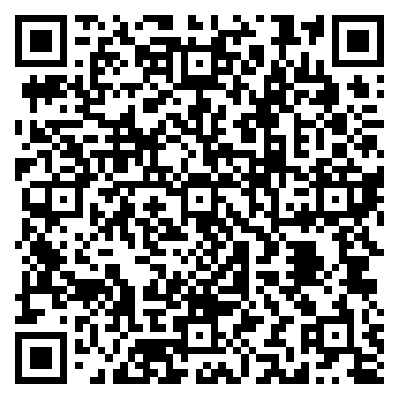Mouthpiece, understand it through the standard
Time of issue:
2023-03-29
A nationwide campaign to prevent and control novel coronavirus pneumonia is underway. As the "first line of defense" for personal health protection, it is important to wear a mask that meets the
A nationwide campaign to prevent and control novel coronavirus pneumonia is underway. As the "first line of defense" for personal health protection, it is important to wear a mask that meets the standards of epidemic prevention. From N95 and KN95 to medical surgical masks, the general public may have some blind spots in their knowledge of mask selection. Here we summarize the knowledge points in the field of standards to help you understand the general knowledge about masks.
What standards are there for masks?
At present, China's main standards on masks include GB 2626-2006 "respiratory protection supplies self-absorbing filtered anti-particulate respirator", GB 19083-2010 "technical requirements for medical protective masks", YY 0469-2004 "technical requirements for medical surgical masks", GB/T 32610-2016 "technical specifications for daily protective masks" and so on, covering Labor protection, medical protection, civil protection and other fields.
GB 2626-2006 "Respiratory Protection Products Self-absorbing Filtered Anti-Particle Respirator" was published by the former AQSIQ and the National Standardization Administration Committee, as a full-text mandatory standard, and was implemented on December 1, 2006. The protection objects specified in this standard include all kinds of particulate matter, namely including dust, smoke, fog and microorganisms, and also specifies the production and technical specifications of respiratory protective equipment, with strict requirements for materials, structure, appearance, performance, filtration efficiency (dust-blocking rate), breathing resistance, testing methods, product identification, packaging, etc. of dust masks.
GB 19083-2010 "medical protective masks technical requirements" by the former AQSIQ, the National Standardization Administration Committee announced on August 1, 2011 implementation. The standard specifies the technical requirements of medical protective masks, test methods, marking and instructions for use and packaging, transportation and storage, applicable to the medical work environment, filtering airborne particles, blocking droplets, blood, body fluids, secretions and other self-absorbing filtered medical protective masks. The standard of 4.10 is recommended, the rest is mandatory.
YY 0469-2004 "medical surgical mask technical requirements" issued by the National Drug and Food Administration, the pharmaceutical industry standards, implemented on January 1, 2005. The standard specifies the technical requirements of medical surgical masks, test methods, marking and instructions for use and packaging, transportation and storage. The standard stipulates that the bacterial filtration efficiency of the mask should be not less than 95%.
GB/T 32610-2016 "technical specifications for daily protective masks" issued by the former AQSIQ and the National Standardization Administration Committee, is the national standard for civil protective masks in China, which was implemented on November 1, 2016. The standard involves mask raw material requirements, structural requirements, labeling requirements, appearance requirements, etc. The main indicators include functional indicators particle filtration efficiency, exhalation and inhalation resistance indicators, tightness indicators, etc. The standard requires that the mask should be able to safely and firmly protect the mouth and nose, there should be no sharp corners and sharp edges that can be touched, and detailed provisions for formaldehyde, dyes, microorganisms and other factors that may cause harm to the human body, in order to protect the safety of the public when wearing protective masks.
What are the common masks?
Now we most commonly mentioned masks, including KN95, N95, medical surgical masks and so on.
First is the KN95 mask. According to the classification of the national standard GB2626-2006 "Respiratory protection supplies Self-priming filtered anti-particulate respirator", masks are divided into two categories KN and KP according to the efficiency level of filtering elements. kP category is suitable for filtering oily particulate matter, and KN category is suitable for filtering non-oily particulate matter. Among them, KN95 masks in the case of detection with sodium chloride particles, its filtration efficiency should be greater than or equal to 95%, that is, for 0.075 microns or more of non-oil particulate matter filtration efficiency greater than or equal to 95%.
N95 mask is one of the nine types of particle protection masks certified by NIOSH (National Institute for Occupational Safety and Health). "N" means not resistant to oil. "95" means that the concentration of particles inside the mask is more than 95% lower than the concentration of particles outside the mask when exposed to a specified number of dedicated test particles.
Then there are medical surgical masks. According to the definition of YY 0469-2004 "medical surgical mask technical requirements", medical surgical masks are "medical surgical masks worn by clinical staff in the invasive operating environment, to provide protection for patients receiving treatment and medical staff performing invasive operations, to prevent the spread of blood, body fluids and splashes for medical and nursing staff to wear at work ". These masks are used in medical environments such as medical outpatient clinics, laboratories, and operating rooms, and are divided from the outside to the inside into a waterproof layer, a filter layer, and a comfort layer.
Next
Next:
MAOSHENG PLASTIC
Add: XinLiRenKou Industrial Park, Xiantao City.
Hubei Province, China 433000
Tel: +86-728-2712198
Fax: +86-728-2712888
E-mail: maoshengshuoliao@163.com
Mobile Site

Mobile Site

